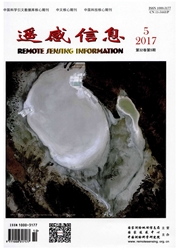

 中文摘要:
中文摘要:
为了提高太湖水体叶绿素a浓度的反演精度,本文采用了浓度分段法,将采样点按其浓度分成两类后分别建立统计模型,并在相关性较低的低浓度模型中采用了光谱修正园子OSS/TSS进行混合光谱分解。最后的验证结果显示,利用浓度分段模型估测叶绿素a浓度的均方根误差(RMSE)为21.12μg/L,R^2=0.92;而利用传统经验模型的估测精度为RMSE=35.72μg/L,R^2=0.72。表明浓度分段法可以有效地提高内陆富营养化水体的叶绿素反演精度。
 英文摘要:
英文摘要:
In this paper, concentration classification was used to improve the accuracy of remote sensing chlorophyll-a retrieval. The samples were classified into two groups, the high concentration and the low concentration, according to its chlorophyll-a concentration (Chl) by the threshold of 50 μg/L. A modifying factor OSS/TSS was also used to increase the correlations between spectra and Chl in the low concentration model. The result shows the concentration classification models allowed estimation of Chl with a RMSE of 21.12 μg/L, whereas the classical statistical experience model allowed the RMSE of Chl estimation was above 35. 0μg/L. It demonstrated the fitness and robustness of this method for Chl retrieval in turbid, productive waters, like Taihu Lake.
 同期刊论文项目
同期刊论文项目
 同项目期刊论文
同项目期刊论文
 期刊信息
期刊信息
